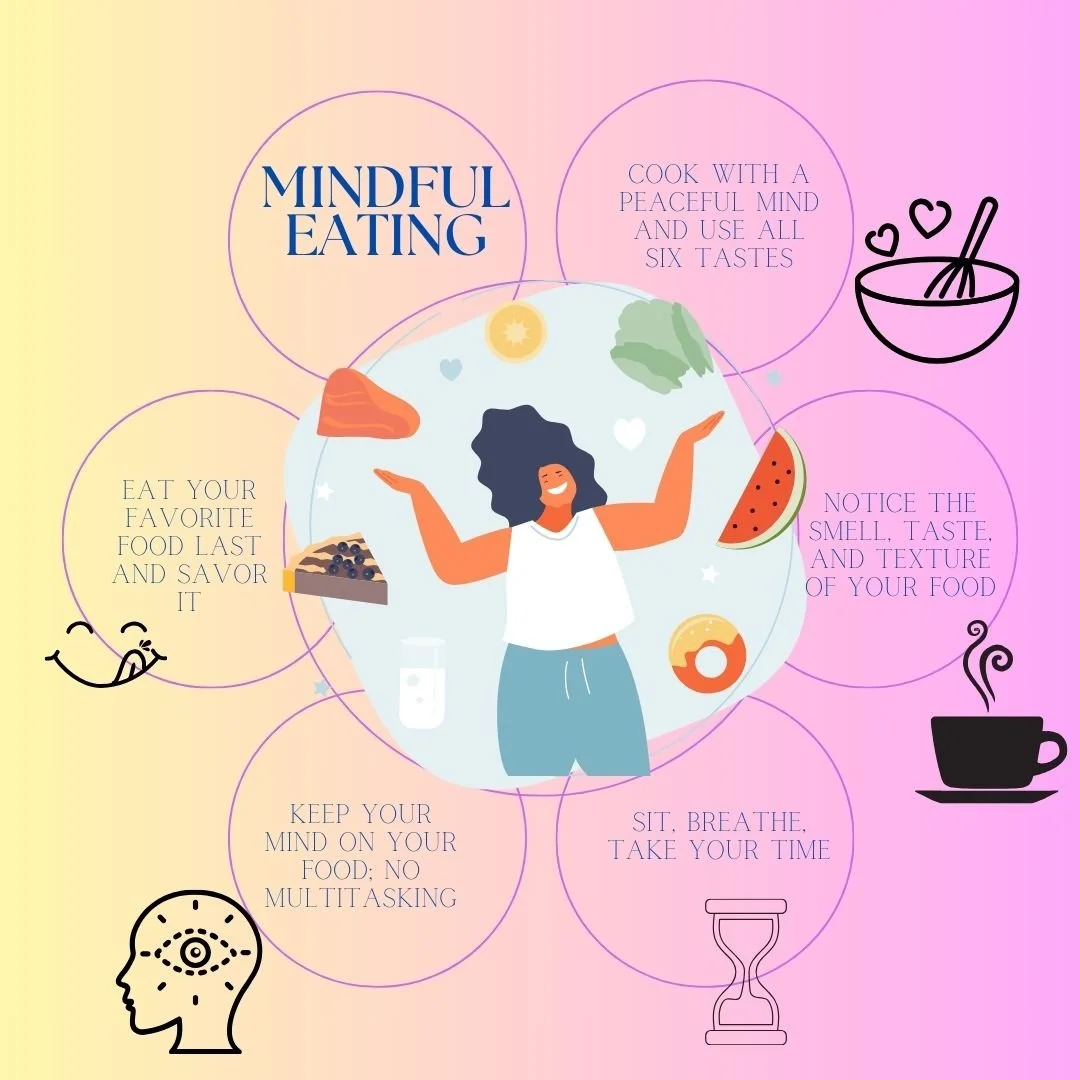Why we eat
As we’re gearing up for Thanksgiving in the US this week, a holiday that's often associated with indulgence in food, it’s a fitting time to look into the nutritious aspect of our food choices. Why do we eat? The simple, straightforward answer might be that we’re hungry, but how often have you found yourself eating out of boredom or as a response to stress? From the lens of Ayurveda, the body consists of channels that transport nutrients, information, and waste through the body. The food channel (annavaha srotas) starts at the mouth and runs the full length of the digestive tract to and through the intestines. Its function is to provide food, water, and nutrients to the body and its tissues. Minerals from the food we eat contribute to electrolyte balance, endocrine function and have an impact on the nervous system. While food moves through this channel, it is digested, absorbed, and assimilated into the body's tissues.
Hunger, what I’ll refer to as true hunger, comes from a hormone that signals your brain that your stomach is empty and it’s time to eat and begin to bring food into that channel. Other times, we may find ourselves mindlessly noshing on food while completing a boring task at work or seeking comfort food during a time of stress. Why eat when we’re not experiencing true hunger? Reward and gratification associated with food consumption leads to dopamine (DA) production, which in turn activates reward and pleasure centers in the brain. [1] The state of our nervous system, whether it is stressed or relaxed, plays a role in our capacity to take in food and adequately process and digest it.
A key concept of health in Ayurveda is a strong digestive fire (agni) that efficiently burns as a way to ‘cook down’ the raw elements of food into the micronutrients that give us healthy skin, bones, hair, etc. and prevent us from developing illness. When we eat under stress, the nervous system isn’t in the state of directing resources to proper digestion. Instead, a stressed nervous system significantly slows down digestion, diverting energy away from the digestive tract that would instead be used to respond to a threat. Eating during this stressed or threatened state can lead to stomach discomfort, nausea, bloating, constipation, or diarrhea, which varies on an individual basis.
So how do you get the most nutrients out of your food and avoid digestive distress? Enter mindful eating. As you become mindful and aware of your body’s cravings and what they’re signaling you can discriminate between true hunger and stressful cravings. If you’re feeling the urge to eat, take the time to pause and assess. Stressful signals can be addressed with a walk, fresh air, a cup of tea, or slow, belly breathing. True hunger calls for initiating a mindful eating session. Check out the graphic below to learn how to incorporate mindful eating into your daily routine. If you want to discuss personalized dietary recommendations, meal plans, or engage in 1:1 yoga practices to support optimal digestion and mindful eating, schedule a session with me.
[1] Singh M. Mood, food, and obesity. Front Psychol. 2014 Sep 1;5:925. doi: 10.3389/fpsyg.2014.00925. PMID: 25225489; PMCID: PMC4150387.

